We are very (and this will date me) jazzed about our 40th catalog, Stimulus: art and its inception. It’s a departure for us, not in the variety of artists and number of countries represented — sculpture, ceramics, art textiles and mixed media by 55 artists from 14 countries — but in what’s new — images and statements designed to give readers a sense of each artist’s creative process. For each of the pieces highlighted in exhibition, the process of finding an image to illustrate the genesis — whether an event, an object, an emotion, a place — and of working with the artists to share something of that process in words, was stimulating for Tom and me. We were also energized by working with Jane Milosch, Director, Provenance Research Initiative, Smithsonian Institution, and former curator, Renwick Gallery, Smithsonian American Art Museum, who writes about creativity and its embodiment in this exhibition in the introductory essay.
Press News: Stimulus: art and its inception — our 40th catalog now available
Update: Books Make Great Gifts 2010
Last December, in our who’s-reading-what survey, artist Kyomi Iwata selected Haruki Murakami’s 1Q84  as the best book she read in 2010. (Lena McGrath Welker also selected Haruki Murakami, in her case, Kafka on the Shore
as the best book she read in 2010. (Lena McGrath Welker also selected Haruki Murakami, in her case, Kafka on the Shore  , as her favorite read for 2010.) At the time, 1Q84 had yet to be translated into English, but there’s good news. A massive volume (944 pages) will be released in an English translation on October 25, 2011. http://www.amazon.com/1Q84-Haruki-Murakami/dp/0307593312. From Amazon, the book is: “A love story, a mystery, a fantasy, a novel of self-discovery, a dystopia to rival George Orwell’s—1Q84 is Haruki Murakami’s most ambitious undertaking yet: an instant best seller in his native Japan, and a tremendous feat of imagination from one of our most revered contemporary writers.”
, as her favorite read for 2010.) At the time, 1Q84 had yet to be translated into English, but there’s good news. A massive volume (944 pages) will be released in an English translation on October 25, 2011. http://www.amazon.com/1Q84-Haruki-Murakami/dp/0307593312. From Amazon, the book is: “A love story, a mystery, a fantasy, a novel of self-discovery, a dystopia to rival George Orwell’s—1Q84 is Haruki Murakami’s most ambitious undertaking yet: an instant best seller in his native Japan, and a tremendous feat of imagination from one of our most revered contemporary writers.”
Art into Type: Books We Talked Up in 2010
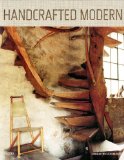 Last year saw several books published that we recommended to clients and purchased for family and friends. Among these were Handcrafted Modern: At Home with Mid-century Designers by Leslie Williamson, a collection of photographs of beautiful, iconic, and undiscovered mid-century interiors, including the homes of Russel Wright, George Nakashima, Harry Bertoia, Charles and Ray Eames, and Eva Zeisel, among others. Williamson’s photographs show these creative homes as they were lived in by their designers: Walter Gropius’ historic Bauhaus home in Massachusetts; Albert Frey’s floating modernist aerie on a Palm Springs rock outcropping; and Wharton Esherick’s completely handmade Pennsylvania house, from the organic hand-carved staircase to the iconic furniture.
Last year saw several books published that we recommended to clients and purchased for family and friends. Among these were Handcrafted Modern: At Home with Mid-century Designers by Leslie Williamson, a collection of photographs of beautiful, iconic, and undiscovered mid-century interiors, including the homes of Russel Wright, George Nakashima, Harry Bertoia, Charles and Ray Eames, and Eva Zeisel, among others. Williamson’s photographs show these creative homes as they were lived in by their designers: Walter Gropius’ historic Bauhaus home in Massachusetts; Albert Frey’s floating modernist aerie on a Palm Springs rock outcropping; and Wharton Esherick’s completely handmade Pennsylvania house, from the organic hand-carved staircase to the iconic furniture.
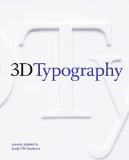 Another favorite volume of ours was 3-D Typography. We added “text” to the title of this blog so that we could cover two things we are passionate about: art that involves text and interesting books. 3-D Typography, which includes work by Gyöngy Laky and dozens of other artists who have created lettering out of everything from shopping carts and toilet paper to toothpaste and pinched flesh, fits both criteria. The book’s creation was serendipitous. The authors, Jeanne Abbink and Emily CM Anderson looked at three-dimensional type in the course on a redesign of American Craft magazine in 2007.
Another favorite volume of ours was 3-D Typography. We added “text” to the title of this blog so that we could cover two things we are passionate about: art that involves text and interesting books. 3-D Typography, which includes work by Gyöngy Laky and dozens of other artists who have created lettering out of everything from shopping carts and toilet paper to toothpaste and pinched flesh, fits both criteria. The book’s creation was serendipitous. The authors, Jeanne Abbink and Emily CM Anderson looked at three-dimensional type in the course on a redesign of American Craft magazine in 2007.
 Long overdue was the first comprehensive survey of modern craft in the United States, Makers: A History of American Studio Craft, by Janet Koplos and Bruce Metcalf. Makers follows the development of studio craft–objects in fiber, clay, glass, wood, and metal–from its roots in 19th-century reform movements to the rich diversity of expression at the end of the 20th century. More than 400 illustrations — including two photographs by Tom — complement this chronological exploration of the American craft tradition. Keeping as their main focus the objects and the makers — including Lenore Tawney, Ed Rossbach, Kay Sekimachi, Katherine Westphal, François Grossen, Lia Cook, Warren Seelig, Arturo Sandoval, Gyöngy Laky, Dorothy Gill Barnes, Clare Zeisler, Anni Albers, Lillian Elliott, Helena Hernmarck, Norma Minkowitz and Trude Guermonprez — the authors offer a detailed analysis of major works and discuss education, institutional support and the philosophical underpinnings of craft.
Long overdue was the first comprehensive survey of modern craft in the United States, Makers: A History of American Studio Craft, by Janet Koplos and Bruce Metcalf. Makers follows the development of studio craft–objects in fiber, clay, glass, wood, and metal–from its roots in 19th-century reform movements to the rich diversity of expression at the end of the 20th century. More than 400 illustrations — including two photographs by Tom — complement this chronological exploration of the American craft tradition. Keeping as their main focus the objects and the makers — including Lenore Tawney, Ed Rossbach, Kay Sekimachi, Katherine Westphal, François Grossen, Lia Cook, Warren Seelig, Arturo Sandoval, Gyöngy Laky, Dorothy Gill Barnes, Clare Zeisler, Anni Albers, Lillian Elliott, Helena Hernmarck, Norma Minkowitz and Trude Guermonprez — the authors offer a detailed analysis of major works and discuss education, institutional support and the philosophical underpinnings of craft.
 Another very special volume from 2010 is Written Weed, by Marian Bijlenga, published by Hein Elferink. This exquisite book includes 111 paste-ups / collages by the artist made of dried leaves, grasses and seeds. The images are like handwriting, Chinese characters, the letters of an alphabet. In order to emphasize the graphic quality of these works, the book is published in black/white. Only 400 copies were produced; each is numbered and signed. You can order it from browngrotta arts for $185.00
Another very special volume from 2010 is Written Weed, by Marian Bijlenga, published by Hein Elferink. This exquisite book includes 111 paste-ups / collages by the artist made of dried leaves, grasses and seeds. The images are like handwriting, Chinese characters, the letters of an alphabet. In order to emphasize the graphic quality of these works, the book is published in black/white. Only 400 copies were produced; each is numbered and signed. You can order it from browngrotta arts for $185.00
 Though it was written in 2009, I didn’t discover The Bird Catcher, by Laura Jacobs, until last year. I loved it and ordered copies for several friends. It’s a tender story of grief and healing in the big city. But it was the detailed description of the protagonist’s window displays for a high-end department store and the evolution of her closest friend’s craft gallery — including a display of elegantly crafted goblets — that I most appreciated.
Though it was written in 2009, I didn’t discover The Bird Catcher, by Laura Jacobs, until last year. I loved it and ordered copies for several friends. It’s a tender story of grief and healing in the big city. But it was the detailed description of the protagonist’s window displays for a high-end department store and the evolution of her closest friend’s craft gallery — including a display of elegantly crafted goblets — that I most appreciated.
Books Make Great Gifts 2010: Artist Recommendations, Part III
Here is the final set of this year’s book recommendations from artists whose work browngrotta arts represents. In the next posting, I’ll list the books Tom and have been talking up in 2010.


 Kiyomi Iwata finds The Human Condition, a six-volume novel by Junpei Gomikawa a continuing inspiration. Published between 1956 and 1958, Kiyomi says, “it is an epic novel about an ordinary man who tried to live true to his own soul during the Second World War.” It is not available in English, but a well-reviewed film version, Ningen No Joken, directed by Matsaki Kobayashi, can be found on DVD. Among Kiyomi’s favorite books are Hungry Planet: What the World Eats by Peter Menzel and Faith D’Alusio, who photographed 30 families in 24 countries – 600 meals in all, and Growing, Older: A Chronicle of Death, Life and Vegetables by Joan Gussow. And Kyomi casts another vote for Haruki Murakami as best in 2010, ranking 1Q84 as the best book she read this year. (Lena McGrath Welker selected Haruki Murakami’s Kafka on the Shore as her favorite read this year.) There are three volumes in the 1Q84 series, which has created a sensation in Japan. The first two have been translated into English and will be published by Knopf in September 2011. A third translation will follow.
Kiyomi Iwata finds The Human Condition, a six-volume novel by Junpei Gomikawa a continuing inspiration. Published between 1956 and 1958, Kiyomi says, “it is an epic novel about an ordinary man who tried to live true to his own soul during the Second World War.” It is not available in English, but a well-reviewed film version, Ningen No Joken, directed by Matsaki Kobayashi, can be found on DVD. Among Kiyomi’s favorite books are Hungry Planet: What the World Eats by Peter Menzel and Faith D’Alusio, who photographed 30 families in 24 countries – 600 meals in all, and Growing, Older: A Chronicle of Death, Life and Vegetables by Joan Gussow. And Kyomi casts another vote for Haruki Murakami as best in 2010, ranking 1Q84 as the best book she read this year. (Lena McGrath Welker selected Haruki Murakami’s Kafka on the Shore as her favorite read this year.) There are three volumes in the 1Q84 series, which has created a sensation in Japan. The first two have been translated into English and will be published by Knopf in September 2011. A third translation will follow.
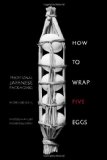



 Nancy Moore Bess reports, “Some version of How to Wrap Five Eggs will always be on my coffee table, in my studio, or on my lap. The most recent purchase in a Tokyo used book bookstore is a boxed edition from the early 1970s and includes all the images we love, plus many photographs documenting the process of making. What a find! New workshops inspired me to reread (with some care) Kunio Ekiguchi’s Gift Wrapping: Creative Ideas from Japan which is much more than a book about giving gifts. Much of her introduction explains the connection between traditional packaging (tsutsumi) and gift wrapping (origata), something I had forgotten.” Nancy notes that her “art” reading has been devoted to trying to understand the “vocabulary of beauty.” She writes, “I have an old, dented copy from the Strand of Japanese Sense of Beauty. I have reread every copy of every book I own that discusses wabi-sabi in Japan. Diane Durston’s Wabi Sabi: The Art of Everyday Life is the one I keep by my reading chair. I can flip it open to any page and be delighted. Tim McCreight wrote two books I go back to: Design Language and Design Language: Interpretive Edition. I love the way these books all make me evaluate what I want to look at and touch.”
Nancy Moore Bess reports, “Some version of How to Wrap Five Eggs will always be on my coffee table, in my studio, or on my lap. The most recent purchase in a Tokyo used book bookstore is a boxed edition from the early 1970s and includes all the images we love, plus many photographs documenting the process of making. What a find! New workshops inspired me to reread (with some care) Kunio Ekiguchi’s Gift Wrapping: Creative Ideas from Japan which is much more than a book about giving gifts. Much of her introduction explains the connection between traditional packaging (tsutsumi) and gift wrapping (origata), something I had forgotten.” Nancy notes that her “art” reading has been devoted to trying to understand the “vocabulary of beauty.” She writes, “I have an old, dented copy from the Strand of Japanese Sense of Beauty. I have reread every copy of every book I own that discusses wabi-sabi in Japan. Diane Durston’s Wabi Sabi: The Art of Everyday Life is the one I keep by my reading chair. I can flip it open to any page and be delighted. Tim McCreight wrote two books I go back to: Design Language and Design Language: Interpretive Edition. I love the way these books all make me evaluate what I want to look at and touch.”

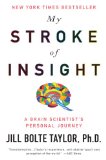 For continuing inspiration, Helena Hernmarck returns to Gunta Stölzl: Bauhaus Master. The book includes dozens of key works by Stölzl accompanied by excerpts drawn from her journals, letters and articles. The writings offer an intimate view of the artist’s life and work as a student, a Red Cross nurse during the war, student and then master of the weaving workshop at the Bauhaus in Weimar and Dessau and founder of her own hand-weaving business in Zurich. “The illustrations are beautiful,” says Helena, “and it’s so interesting to read Stölz’s impressions of what occurred at the Bauhaus, as it was happening.” Helena is currently reading My Stroke of Insight: A Brain Scientist’s Personal Journey by Jill Bolte Taylor. Taylor, a Harvard-trained neuroanatomist experienced a massive stroke at 37 when a blood vessel exploded in the left side of her brain. It would take eight years for Taylor to heal completely. The stroke taught Taylor that the feeling of nirvana is never more than a mere thought away and can be accessed by stepping to the right of our left brains.
For continuing inspiration, Helena Hernmarck returns to Gunta Stölzl: Bauhaus Master. The book includes dozens of key works by Stölzl accompanied by excerpts drawn from her journals, letters and articles. The writings offer an intimate view of the artist’s life and work as a student, a Red Cross nurse during the war, student and then master of the weaving workshop at the Bauhaus in Weimar and Dessau and founder of her own hand-weaving business in Zurich. “The illustrations are beautiful,” says Helena, “and it’s so interesting to read Stölz’s impressions of what occurred at the Bauhaus, as it was happening.” Helena is currently reading My Stroke of Insight: A Brain Scientist’s Personal Journey by Jill Bolte Taylor. Taylor, a Harvard-trained neuroanatomist experienced a massive stroke at 37 when a blood vessel exploded in the left side of her brain. It would take eight years for Taylor to heal completely. The stroke taught Taylor that the feeling of nirvana is never more than a mere thought away and can be accessed by stepping to the right of our left brains.
Books Make Great Gifts 2010: Artist Recommendations, Part I
I asked the artists whose work browngrotta arts represents to weigh in with book recommendations again this year. Specifically, I asked them to provide a list of any or all of the following: “What book(s) inspired you in the past?” “What book(s) continue to inspire you?” “What book(s) remain among your favorite(s)?” and/or “What was the best book you read in the last year?” As always, people responded swiftly and thoughtfully, with enough suggestions to fill a few posts. Here are ten suggestions to start.
For Lena McGrath Welker, books that provide past and continuing inspiration include Fugitive Pieces by Anne Michaels, Dark Nights of the Soul by Thomas Moore, which has an excellent section on creativity, Wabi-Sabi, the original text by Leonard Koren, and poems by Anna Ahkmatova (You Will Hear Thunder and Complete Poems) and Anne Carson (Nox, Decreation and Glass, Irony and God, among others). Welker has been very involved in preparing her one-person exhibition this year (currently at the North Dakota Museum of Art – more on that in an upcoming blog) but she says the best book she listened to this year was Kafka on the Shore by Haruki Murakami.
Debra Sachs says, “I mostly prefer fiction but after hearing Barbara Strauch in an interview I decided to read her book, The Secret Life of the Grown-up Brain: The Surprising Talents of the Middle-Aged Mind. It is so affirming to those of us of a certain age who feel like our minds are constantly betraying us.” Sachs adds; “How does it influence the artist me? I can’t remember!!!”


Heidrun Schimmel has been very interested in books about New York as “the metropolis of modern and contemporary art,” including Just Kids by Patti Smith and Fifth Avenue by Stephan Wackwitz, of the Goethe Institute in New York. Fifth Avenue was published this year by S.Fischer Verlag in Frankfurt and has not yet been translated into English. Wackwitz’ previous work, An Invisible Country, is available in English.
 The Life of Isamu Noguchi: Journey Without Borders, is recommended by Tamiko Kawata. The serious and studious book looks at the life and art and racial problems that faced the artist, who once said that his “longing for affiliation” was source of his creativity.
The Life of Isamu Noguchi: Journey Without Borders, is recommended by Tamiko Kawata. The serious and studious book looks at the life and art and racial problems that faced the artist, who once said that his “longing for affiliation” was source of his creativity.
 Scott Rothstein recommends Kantha: The Embroidered Quilts of Bengal from the Jill and Sheldon Bonovitz Collection and the Stella Kramrisch Collection of the Philadelphia Museum of Art. Jill and Sheldon Bonovitz are collectors of American Outsider Art. In Kantha, which are made by self-taught artists, they saw the same spirit and vision as in the art they have acquired over the last 25 years. Scott played a role in growing the Kantha collection for his hometown museum’s collection, having discovered some of the Kathas in the Bonovitz collection while he lived in India. Scott shares the couple’s appreciation for Outsider Art. See his blog: Art Found Out: for more on Outsider Art around the world.
Scott Rothstein recommends Kantha: The Embroidered Quilts of Bengal from the Jill and Sheldon Bonovitz Collection and the Stella Kramrisch Collection of the Philadelphia Museum of Art. Jill and Sheldon Bonovitz are collectors of American Outsider Art. In Kantha, which are made by self-taught artists, they saw the same spirit and vision as in the art they have acquired over the last 25 years. Scott played a role in growing the Kantha collection for his hometown museum’s collection, having discovered some of the Kathas in the Bonovitz collection while he lived in India. Scott shares the couple’s appreciation for Outsider Art. See his blog: Art Found Out: for more on Outsider Art around the world.
More to come.
Technorati Tags: Lena Welker, Heidrun Schimmel, Tamiko Kawata, Scott Rothstein
Search
Subscribe2
Recent Posts
- December 10, 2025
- December 3, 2025
- November 26, 2025
Pages
blogroll
Archives
- December 2025
- November 2025
- October 2025
- September 2025
- August 2025
- July 2025
- June 2025
- May 2025
- April 2025
- March 2025
- February 2025
- January 2025
- December 2024
- November 2024
- October 2024
- September 2024
- August 2024
- July 2024
- June 2024
- May 2024
- April 2024
- March 2024
- February 2024
- January 2024
- December 2023
- November 2023
- October 2023
- September 2023
- August 2023
- July 2023
- June 2023
- May 2023
- April 2023
- March 2023
- February 2023
- January 2023
- December 2022
- November 2022
- October 2022
- September 2022
- August 2022
- July 2022
- June 2022
- May 2022
- April 2022
- March 2022
- February 2022
- January 2022
- December 2021
- November 2021
- October 2021
- September 2021
- August 2021
- July 2021
- June 2021
- May 2021
- April 2021
- March 2021
- February 2021
- January 2021
- December 2020
- November 2020
- October 2020
- September 2020
- August 2020
- July 2020
- June 2020
- May 2020
- April 2020
- March 2020
- February 2020
- January 2020
- December 2019
- November 2019
- October 2019
- September 2019
- August 2019
- July 2019
- June 2019
- May 2019
- April 2019
- March 2019
- February 2019
- January 2019
- December 2018
- November 2018
- October 2018
- September 2018
- August 2018
- July 2018
- June 2018
- May 2018
- April 2018
- March 2018
- February 2018
- January 2018
- December 2017
- November 2017
- October 2017
- September 2017
- August 2017
- July 2017
- June 2017
- May 2017
- April 2017
- March 2017
- February 2017
- January 2017
- December 2016
- November 2016
- October 2016
- September 2016
- August 2016
- June 2016
- April 2016
- March 2016
- February 2016
- December 2015
- October 2015
- September 2015
- August 2015
- June 2015
- May 2015
- April 2015
- March 2015
- February 2015
- January 2015
- December 2014
- November 2014
- October 2014
- September 2014
- August 2014
- July 2014
- June 2014
- May 2014
- April 2014
- March 2014
- February 2014
- January 2014
- December 2013
- October 2013
- September 2013
- July 2013
- June 2013
- May 2013
- April 2013
- March 2013
- January 2013
- December 2012
- November 2012
- October 2012
- September 2012
- August 2012
- July 2012
- June 2012
- May 2012
- April 2012
- March 2012
- February 2012
- January 2012
- December 2011
- November 2011
- October 2011
- September 2011
- August 2011
- July 2011
- June 2011
- May 2011
- April 2011
- March 2011
- February 2011
- January 2011
- December 2010
- November 2010
- October 2010
- September 2010
- August 2010
- July 2010
- June 2010
- May 2010
- April 2010
- March 2010
- February 2010
- January 2010
- December 2009
- November 2009
- October 2009
- September 2009
- August 2009
Categories
- Acquisitions
- Aldrich Museum of Contemporary Art
- Allies for Art
- An Unexpected Approach
- Anniversary
- Architecture
- Art
- art + identity
- Art Assembled
- Art Materials
- art money
- Art Preview
- Art Textiles
- artist
- Artsy
- Awards
- bamboo
- Basketmakers
- Basketry
- Behind the Scenes
- Blue/Green
- Book Recommendations
- Books
- Catalogs
- Ceramics
- Charity
- Classes
- Collage
- Collectors
- Commentary
- Commission
- Commissions
- Danish Tapestry
- DIY
- Eco-Art
- Exhibitions
- Fashion
- Fiber Future
- Fiber Sculpture
- Film
- Galleries
- Gifts
- Guest Post
- History
- In the News
- Installations
- Japandi
- Japanese Art
- Japanese Ceramics
- Lectures
- Mixed Media
- Museums
- New This Week
- New York
- Obituary
- Obiturary
- Outdoors
- Paper
- Philadephia Museum of Art
- Photography
- Politics
- Pop-Up Exhibition
- Press
- Process Notes
- Sculpture
- SOFA
- Sweepstakes
- Tapestry
- tate modern
- Technology
- Text Art
- Travel
- Uncategorized
- Volume 50: Chronicling Fiber Art for Three Decades
- White
- White Art
- Who Said What
- Wood
- Workshops
Tags
Adela Akers art assembled Basketry browngrotta arts Carolina Yrarrázaval Dorothy Gill Barnes Ed Rossbach Gyöngy Laky Heidrun Schimmel Helena Hernmarck Hisako Sekijima James Bassler Jane Balsgaard Jennifer Falck Linssen Jin-Sook So Jiro Yonezawa John McQueen Judy Mulford Karyl Sisson Kay Sekimachi Kiyomi Iwata Kyoko KumaI Lawrence LaBianca Lenore Tawney Lewis Knauss Lia Cook Magdalena Abakanowicz Marian Bijlenga Mariette Rousseau-Vermette Mary Giles Mary Merkel-Hess Nancy Koenigsberg Nancy Moore Bess Naoko Serino Naomi Kobayashi Norma Minkowitz Rachel Max Randy Walker Sheila Hicks Sheila hicks Stéphanie Jacques Sue Lawty Tapestry Wendy Wahl Yasuhisa KohyamaAbout browngrotta.com
blogroll
reboot
site-ings
who's showing where
Subscribe
Pages
Archives
Calendar



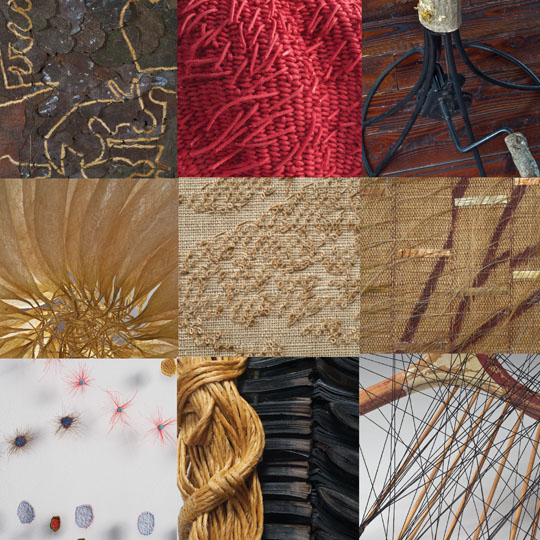

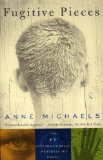


Books Make Great Gifts 2011: Artist Recommendations
This year we asked the artists we represent just one question:
What was the most enjoyed/most inspirational book you read this year?? Here are their wide-ranging replies:
The Absolutely True Diary of a Part-Time Indian by Sherman Alexie, illustrated by Ellen Forney (Little, Brown; National Book Award) . This is a semi-autobiographical novel by award-winning author, poet and film-maker, Sherman Alexie. Alexie has been named one of Granta’s Best Young American Novelists and has been lauded by The Boston Globe as “an important voice in American literature.” He is one of the most well-known and beloved literary writers of his generation, with works such as Reservation Blues and War Dances. He also wrote the screenplay for the film, Smoke Signals, based on a short story from his book, Lone Ranger and Tonto Fistfight in Heaven. In his novel, Alexie tells the heartbreaking, hilarious, and beautifully written story of a young Native American teen, Arnold, as he attempts to break free from the life he was destined to live. Arnold’s drawings illustrate the book.”
Sensual Relations by David Howes (University of Michigan) is Deborah Valoma’s recommendation.